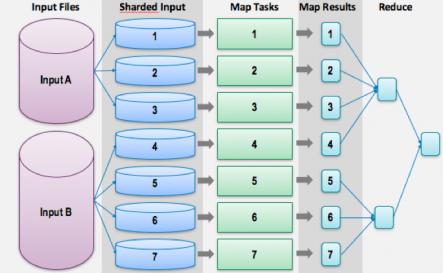In the 35 years since commercial EDA went mainstream a lot of advances have been made but the  fundamental architecture and even the philosophy of tooling have really not advanced at all. Tools are designed around individual tasks – analysis and optimization within a specific domain – under the assumption that variability within other domains can be held constant, or approximated through margins or, if unavoidable, can be folded into the calculation at the expense of decreased capacity and performance.
fundamental architecture and even the philosophy of tooling have really not advanced at all. Tools are designed around individual tasks – analysis and optimization within a specific domain – under the assumption that variability within other domains can be held constant, or approximated through margins or, if unavoidable, can be folded into the calculation at the expense of decreased capacity and performance.
The last option is becoming less practical as Moore’s law is slowing. When problems get harder, we have to split them up into smaller pieces and we have to accept more limitations on what we can build and how it can be used. But these limitations come from assuming we have to do all our calculation in one tool. Suppose it was possible to co-analyze across multiple domains without this constraint and, more importantly, suppose that would get us to a significantly better result – faster, cheaper, lower power and more reliable. Have we not been doing that simply because we didn’t know it could be done?
Ansys is leading the charge to make this possible through their SeaScape platform, and to do that they have fundamentally changed that single-objective EDA architecture. First they have made it possible to do multi-domain analysis and optimization across very diverse domains. We already know that if we want to find best solutions in a multi-dimensional problem, searching one dimension at a time will give you some improvement but almost certainly not the greatest possible improvement. SeaScape makes it possible to look at multiple dimensions together, which means we can find those globally optimal solutions.
Second, Seascape doesn’t try to fix the problem by pushing more functionality into monolithic tools; that approach is inherently self-limiting. Think about physical design – it already looks at geometry, timing, power dissipation and signal integrity; doing all of this already limits capacity sufficiently that large designs have to be partitioned. It’s not realistic to assume that to all these functions you can also add IR-drop, EM and other analyses dependent on dynamic use-case scenarios. SeaScape instead uses Big Data techniques to mine multi-domain simulation data (power, timing, package characteristics and more) to provide real-time feedback.
And third, to get scalability of analysis, SeaScape turns traditional EDA architecture inside-out. In the classical EDA approach, you start with your tool and then you work on making it multi-threaded (you might also work on additional task partitioning). But all of this is a tool-centric optimization – what you do for one tool doesn’t necessarily benefit other tools, especially if they are in different domains. Seascape instead provides an intrinsically scalable foundation for applications. It does this with a variant on the Big Data MapReduce concept, adapted to handle the distributed LSF/Linux server networks and EDA datatypes (layout, simulation, ..) and databases common in this domain.
Ansys isn’t positioning to replace the entire EDA toolchain. SeaScape-based analytics complement existing well-known logical and physical design tools. Those tools will just do a better job working with Ansys applications built on SeaScape. Meantime Ansys will continue to advance this capability to build further optimizations up into the package and system levels, complementing the multi-physics analysis they already provide for mechanical, electromagnetics and fluidics design. Since that’s where more of the electronics industry focus is going these days, that seems like a smart move.
To learn more about SeaScape, click HERE. To learn more about about how Ansys has applied SeaScape to their new SeaHawk product, click HERE. ChipGuy has a blog about SeaHawkwhich goes into more detail on application to redefining signoff. And to get a live update and an opportunity to question the experts on what next-generation EDA products can do for you, register for Ansys suite sessions at DAC (in-design and best practices, kicking off June 6[SUP]th[/SUP] in Austin) HERE.
Share this post via:






Comments
There are no comments yet.
You must register or log in to view/post comments.